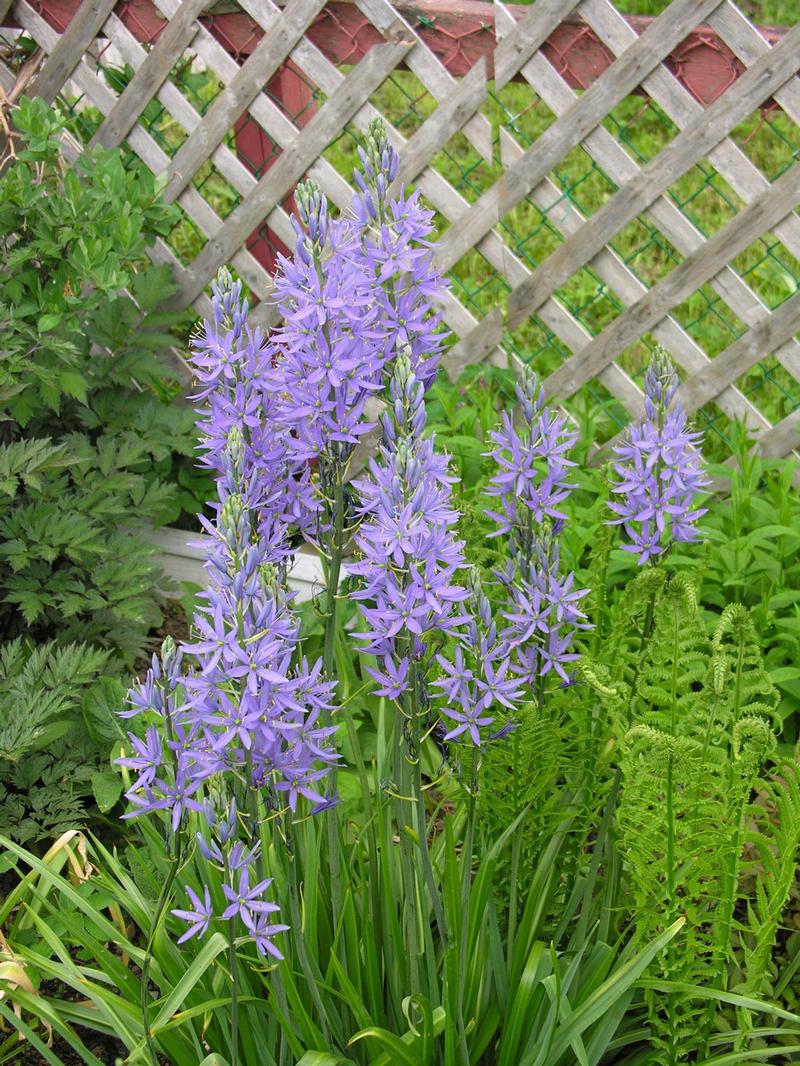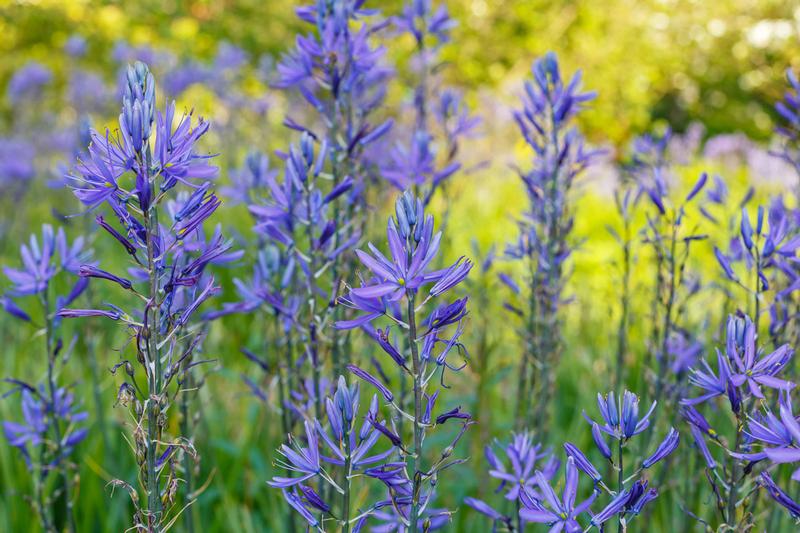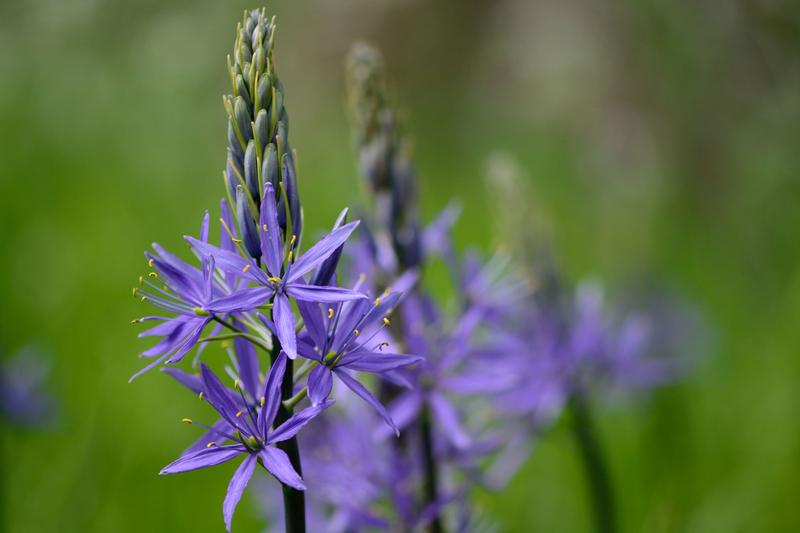ALL ABOUT CAMASSIA
This lovely, spring-blooming perennial is native to the mountains of the Pacific Northwest. Camassia’s flower stalks stand 24-30” tall and display dozens of star-like florets that open from the bottom up. Depending on the cultivar, the flower color may be white, cream, blue or purple.
Camassia bulbs are winter hardy in zones 4-8. Both the plant and the bulbs are resistant to deer and rodent damage.
Camassia is also known as wild hyacinth, Indian hyacinth and quamash.

How to Grow Camassia
Camassia bloom in late spring, after the daffodils and before peonies and other early summer perennials.
In their natural habitat, these bulbs grow in woodland edges and moist meadows. Once planted, they will usually bloom for many years.
After camassia finish flowering, the foliage gradually yellows and fades away. If you are growing it in a perennial garden, plan to have other plants hide the foliage and fill the gap left behind. Camassia are not recommended for containers because the bulbs dislike being disturbed.
Camassia are good cut flowers. Cutting the stems does not harm the plant. For best results, condition the flowers overnight in cool water before arranging them.

How to Plant Camassia
Plant camassia in moist, humus-rich soil that’s slightly acidic. Full sun is ideal, but these plants will also grow in partial shade. Camassia bulbs tolerate more moisture than most other spring-blooming bulbs but they should not be planted in a soggy area or in a depression where water may accumulate.
Camassia bulbs are rounded, with a pointy end that should face up when planting. Plant the bulbs 5” deep and 5 to 6” apart.

Aftercare for Camassia
Camassia bulbs may be left undisturbed for many years and will gradually multiply to form good-size clumps. If you wish to divide the plant, dig it up in summer when the bulbs are dormant. Harvest the offsets that form around the main bulbs and plant them elsewhere. They will grow to blooming size within a couple years.
To learn more about spring bulbs, read:
